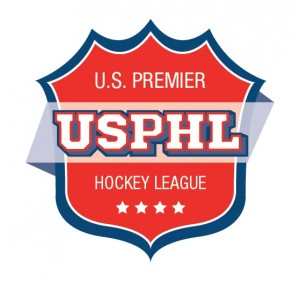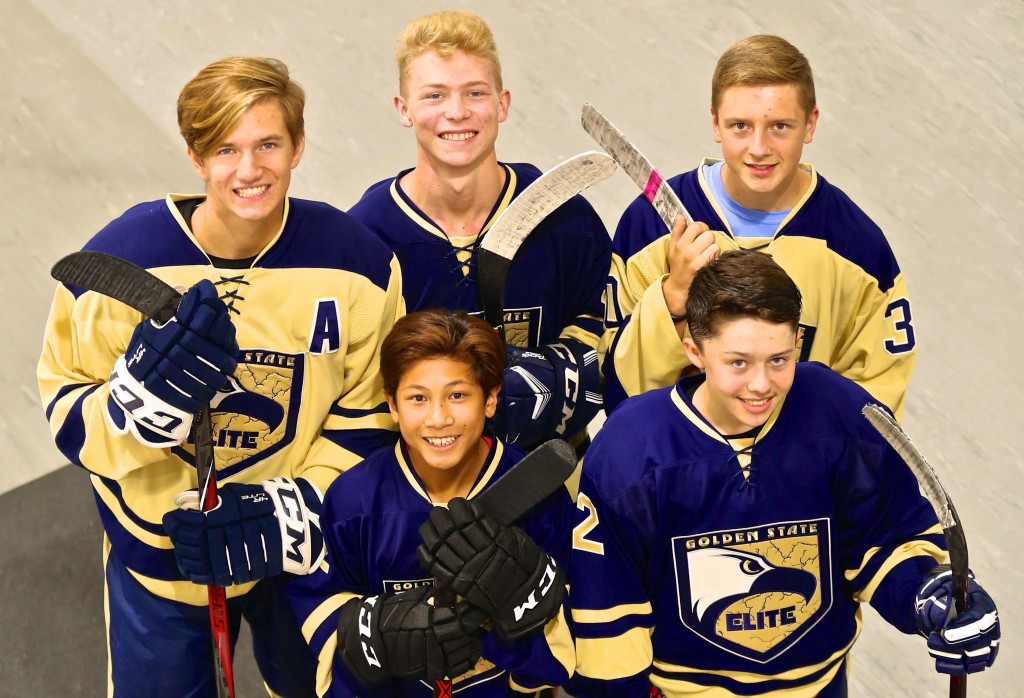Golden State Elite program continues to shine, grow in Northern California

When Chris Hathaway, Larry Cahn and William Stone first came together to start the Golden State Elite Eagles program back during the 2012-13 season, none of them could have imagined the success it would become.
Of course, they put significant planning and forethought into it and set their goals high, but very little was certain.
As the 2019-20 season opens and the program continues to thrive, the trio can look back with great pride at what they have built while also looking forward to some even bigger and better things in the seasons to come.
 While roster spots on Golden State Elite teams are open to any and all players, close to 90 percent of the program’s tier players come up through one of GSE’s four member clubs – the Cupertino Cougars, Tri-Valley Blue Devils, Vacaville Jets and San Francisco Sabercats. They’re building the foundation from the Squirt and Mite levels for success at the higher levels, and Hathaway and his colleagues can see that their long-term development plan is falling nicely into place.
While roster spots on Golden State Elite teams are open to any and all players, close to 90 percent of the program’s tier players come up through one of GSE’s four member clubs – the Cupertino Cougars, Tri-Valley Blue Devils, Vacaville Jets and San Francisco Sabercats. They’re building the foundation from the Squirt and Mite levels for success at the higher levels, and Hathaway and his colleagues can see that their long-term development plan is falling nicely into place.
This season, the Eagles will ice seven teams, all at the AA level. At the 12U, 14U and 16U age groups, there will be a north and a south team, as well as one 18U squad. The Eagles have rinks in the San Francisco Bay Area cities of Dublin and Vacaville – where the north teams practice and play – as well as Cupertino, near San Jose, where the south teams are based.
“When we started, there was certainly an element of luck in us becoming successful,” Stone said. “The market was sort of ripe for a program like this. There were some under-performing tier programs in our area, and the parents were hungry for an alternative like this.
“But of course, we also came into the first tryout with great coaches, and that’s always the foundation of a solid program. We had Mario Morisette, Mike Holmes, Larry Cahn and Greg Rodriguez – they were here at the beginning, and they’re still here as part of our program.”
Within the program’s first two seasons, the Eagles had two teams advance to the USA Hockey Tier II National Championships, and that quickly cemented their reputation as one of the stronger programs anywhere. That helped attract more players and their parents to the program, and perhaps the thing that has made the founders most proud has been their ability to sustain the Eagles’ level of performance over the course of seven seasons.
“Getting your great coaches and players to stay with the program is a big part of it,” Stone said. “But the other really big part of it is sticking with the approach you have set out to develop players and doing it in an ethical way that guides you each and every day.”
Hathaway said that he and the other members of the Eagles’ leadership team have been working hard on some new developments to enhance their offerings.
GSE offered a spring program for the first time this year, and after seeing its success will plan to have it again in 2020. While they encourage kids of all ages to play other sports, they found that a lot of players were still looking to play some hockey in the offseason. Rather than traveling to far away camps, they’re now able to get on the ice right in their own backyards.
“This is not something that’s mandatory by any means, but we listened to our membership and wanted to give them something to keep kids engaged in the offseason,” Hathaway explained. “All the games are on the weekends from April-June, and kids have the option to practice with their teams or they can do skills clinics during the week.
“We put that league together this spring, and it was awesome. We got tons of positive feedback. It allowed kids who were playing spring sports at their high schools to show up and play games on the weekends. Or could show up on a Tuesday for a clinic because they didn’t have lacrosse practice, for example. We made it a very flexible schedule.”
Something else that will be new this fall for the program is “GSE Prospects.” At the 10U age group, coaches will put on clinics at all of the member programs’ rinks.
“We don’t want kids to be traveling all over the place and spending so much time sitting in cars,” Hathaway explained. “So we’re trying to come up with creative ways to get players of similar skill levels on the ice together. We’re looking to get the kids who at the top of their age group in terms of skills on the ice with players of a similar skill level.
“The plan is to do some clinics this fall and then put kids together on teams for some spring tournaments. We think it will give us the chance to see what we might have coming up the pipeline and help get the kids acclimated to what tier hockey is all about and educate them and their parents earlier.”
If the trial run works as they hope it will, Hathaway and his colleagues will aim to alter the program’s structure so players would practice at their local rink on weekdays and play games with their teams on the weekends. That way, travel is limited, and players and coaches can focus intently on skill development during the week while saving team concepts for the weekends.
“We want to offer the best development program, but at the same time find a way to make it practical,” Hathaway said. “I just don’t think it makes sense for kids who live in Sacramento to be driving down to Cupertino during the week. It’s just not realistic.”
The Eagles are a strong AA program, and every once in a while, will find that some of their players have outgrown the level and are ready to test themselves playing AAA hockey. Rather than encourage them to stay for the betterment of the team they’re on, GSE’s coaches will encourage them to develop their skills at the higher level with another program.
On the other end of the spectrum, there have been times that they have suggested an undersized or overmatched player go back to one of their member clubs to build their skills and be ready to compete at the AA level the next season.
It’s not uncommon for Stone, Hathaway, Cahn and Peter Korcsinsky – who joined GSE’s leadership team last year representing the Sabercats – to be pressured to pursue the possibility of icing AAA teams as well. While the Eagles have done it a couple times in their past, they will only consider it in years that they’re certain they have enough players who are ready to compete at that level.
“Our core philosophy is to do what’s best for the players,” Stone said. “All our discussions are based on that philosophy and are tested against it. That allows us to know that if our core group of founders is debating something, at the end of the day, we’re going to do what is best for the players and their development – not what feeds our egos or helps us make more money.”
Photos/John Cadeddu (top), Randy Lashinski (middle)
— Greg Ball
(Oct. 14, 2019)











